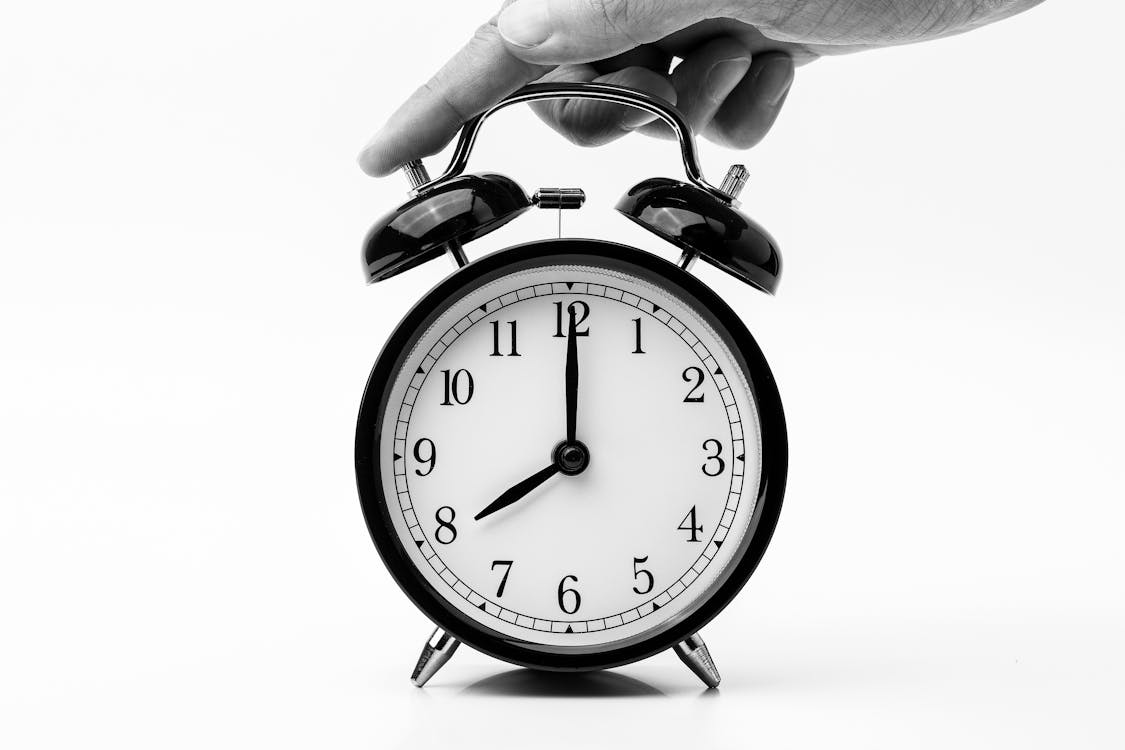Telling time in Spanish
Let’s suppose you’re on a study abroad program and you meet a special someone. You set a date and time to meet up again, but how will you know when to meet them? You’ll have to know how to tell the time in Spanish, of course! And in this article, we will teach you everything you need to know about communicating the time of day with a Spanish speaker. This will come in handy in your work life, in your personal life, in your dating life, and even when someone just stops you passing by on the street to ask you the time.
It can be a little difficult for English speakers because there are some noticeable differences in how Spanish speakers tell time. Although it may seem counterintuitive at first once you get the hang of it, telling time will be second nature.
The first thing you will need to know is how to say the numbers (at least 1 through 12). In some parts of Europe and in many other Spanish-speaking countries they may use 24-hour time (which is sometimes referred to as military time in English. In this case you might actually need to know the numbers 1 through 24.) If you don’t know this already there are other more in-depth articles that can teach you how to count in Spanish, but here’s a quick recap.
0. Zero = cero
1. One = uno
2. two = dos
3. three = tres
4. four = cuatro
5. five = cinco
6. six = seis
7. seven = siete
8. eight = ocho
9. nine = nueve
10. ten = diez
11. eleven = once
12. twelve = doce

¿Que hora es? What time is it?
Now that you know how to count to 12 in Spanish, how do you use these numbers to tell the time?
Es la una – Es la una means “It’s one o’clock”. You only use “es” when the time is singular, meaning only at one o’clock. For all other times, you say “son las”. There is no real equivalent to this convention in English, so it’s just something that you are going to have to memorize.
Son las __ – You use son las for all other times when the time of day is a plural number. For example:
- Son las dos. – It’s two o’clock.
- Son las tres. – It’s three o’clock.
- Son las cuatro. – It’s four o’clock.
- Son las cinco. – It’s five o’clock.
- Son las seis. – It’s six o’clock.
”A la” una or “a las __” – When you want to indicate when something will take place, you say “A la” (if it is happening at 1:00) or “a las” for any other time. This is the equivalent of saying “at one o’clock” or “at two o’clock” in English.
For example: La fiesta comienza a las cuatro. The party begins at 4:00.
Hour and minutes in Spanish time
In Spanish, you say more specific times with “hour” + “y” + “minutes”. Example: Son las cinco y quince. This literally translates to “it is 8 and 15”, but it means 8:15.

Here are some ways that you can get fancy when you are telling the time in Spanish:
- De la mañana (in the morning). Es la una de la mañana. It is 1:00 in the morning (1:00 am)
- Y quarto (quarter past). Example: Son las cuatro y quarto. It is 4:15 (quarter past 4:00).
- Y media (half past). Example: Son las cinco y media. It is 5:30 (half past 5:00)
- Menos quarto (quarter to): Son las ocho menos quarto. It is 7:45 (quarter to 8:00)
Here is a personal example of how knowing how to tell the time in Spanish helped me to fit in.
When I was staying at a resort in the Dominican Republic, very few people believed that I spoke Spanish when they first saw me. I look very “American”. I have a vivid memory of postponing a dinner reservation because we were trying to go horseback riding at sunset. The receptionist asked me in Spanish what time we would like to reschedule. I said “seis menos quarto” (this literally translates to six less a quarter. In other words, how you would say “quarter to six” in English to indicate 5:45)
To this day, I still remember the look of surprise on his face. This is a far less common way to say it, and most beginners would not know to do this. This guy had no doubt that I knew how to speak with him in Spanish.
More phrases you might hear:
Spanish phrases for telling time
| Spanish | English |
|---|---|
| a la medianoche | at midnight |
| al mediodía | at noon |
| amanecer | dawn |
| anoche | last night |
| anteayer | the day before yesterday |
| ayer | yesterday |
| de la noche | in the evening or night |
| de la tarde | in the afternoon |
| durante el día | during the day |
| el año pasado | last year |
| el año que viene | next year |
| el lunes pasado | last Monday |
| en punto | exactly / "sharp" |
| la mañana | morning or tomorrow |
| la noche anterior, anteanoche | the night before |
| la semana pasada | last week |
| la semana que viene | next week |
| last el lunes que viene | next Monday |
| madrugada | the middle of the night |
| mañana | in the morning |
| mañana por la mañana | tomorrow morning |
| medianoche | midnight |
| mediodía | midday |
| noche | at night |
| pasado mañana | the day after tomorrow |
| por la mañana | in the morning |
| por la noche | in the evening or night |
| por la tarde | in the afternoon |
| semana por medio | every other week |
| tarde | late |
| tarde | in the afternoon |
| temprano | early |
Punctuality is important when developing new relationships because it shows respect and consideration for the other person’s time. It also sets a good precedent for future interactions and shows that the person values the relationship and is willing to make an effort to be reliable and dependable. Additionally, being punctual can help to establish trust and build a strong foundation for the relationship. That’s why it’s so important to learn to tell time in Spanish!
You may also enjoy these articles:
Colors in Spanish
Goodnight in Spanish
Ahora in Spanish
Necesito in Spanish